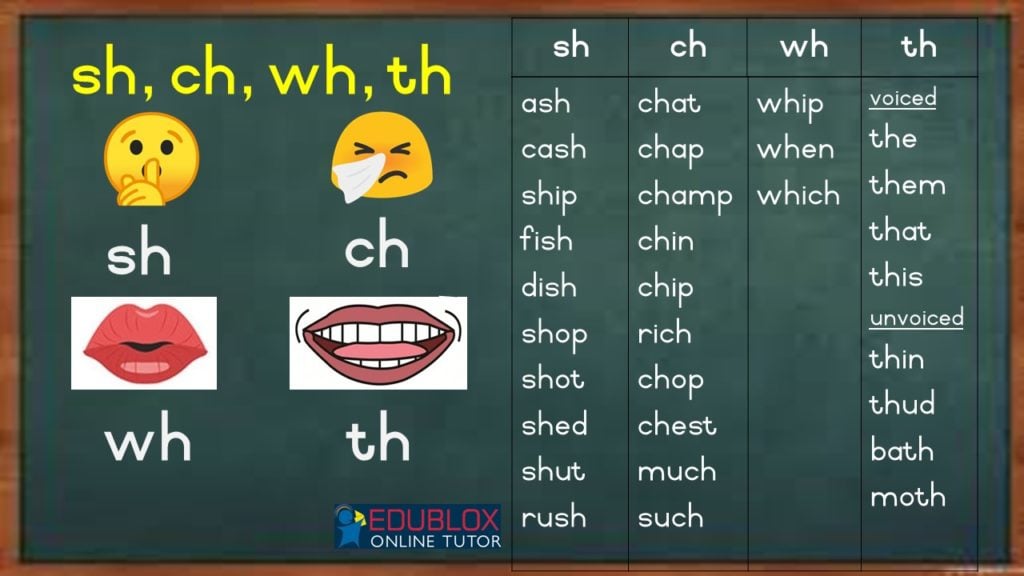A digraph is two letters that combine to correspond to one sound (phoneme). Examples of consonant digraphs are sh, ch, wh, and th.
The digraphs sh, ch, and th represent unique sounds that are not usually associated with any individual letters of the alphabet. When the /s/ sound combines with the /h/ sound, they create the unique sound of /sh/.
The /ch/ sound, as in chip, is produced by touching the tip of the tongue to the roof of the mouth to block the passage of air very briefly before releasing it through the mouth. It is similar to the sound of a sneeze.
Even though both versions of the /th/ sound are produced with the same mouth position, the voiced /th/ uses the vocal cords to amplify the sound, such as in this, that and them. On the other hand, the unvoiced /th/ sound relies only on the air passing through the mouth and the teeth, resulting in a softer /th/ sound in words like thin and thud.

The pronunciation of the digraph wh in English has changed over time, and still varies today between different regions and accents. It is now most commonly pronounced /w/, the same as a plain initial w, although some dialects, particularly those of Scotland, Ireland, and the Southern United States, retain the traditional pronunciation /hw/, generally realized as [ʍ], a voiceless “w” sound..
Edublox offers cognitive training and live online tutoring to students with dyslexia, dysgraphia, dyscalculia, and other learning disabilities. Our students are in the United States, Canada, Australia, and elsewhere. Book a free consultation to discuss your child’s learning needs.

